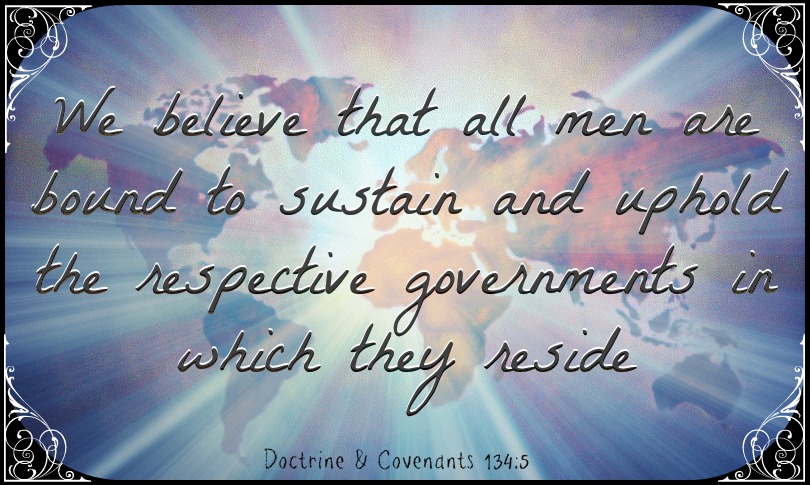Soon after Typhoon Haiyan landed in the Philippines, amazing stories began to emerge from the Mormon community there, particularly among the missionaries serving from around the world. Mormon is a nickname sometimes applied to members of The Church of Jesus Christ of Latter-day Saints. This was an extraordinary experience far outside the predictable lives most of the missionaries had left behind.
Mormon missionaries serve as full-time volunteers for eighteen months to two years. Men can serve starting at age eighteen and women at nineteen. This means that many of the missionaries in the Philippines were very young, most living away from home for the first time. Few had experiences coping with such large trials. Despite this, these young people acted wisely and bravely, all surviving the terrible storm and even helping others in the process. The Church, while searching for missing missionaries, also employed its vast humanitarian resources to help the people impacted by the storm, regardless of their religious beliefs.
Preparation for Typhoon Haiyan
Because there was time to prepare for the storm, the Church took steps to make sure the missionaries would be as safe as possible. They were given 72-hour kits filled with the supplies they would need to survive a few days, including rope. Those believed to be in a danger zone were moved to new locations. The Church also evaluated what resources the community might need from their humanitarian aid program. Plans were made to convert meetinghouses, which are different from Mormon temples, into shelters if needed. They prepared items to use in their humanitarian work. In one area, a branch president (lay pastor) rode his bicycle to communicate with every family in his congregation and to ask them to evacuate to the chapel during the storm. All who did so survived.
There are more than 675,000 Mormons in the Philippines, and many thousands in the stricken areas. During the storm, many took shelter in the 200 Mormon chapels, as did many other people who were not Mormon. Many in the communities knew the Mormon chapels would have food and water. More than a month and a half later, some church buildings were still being used as shelters.
Missionary Experiences
One story to emerge after the storm was the experience of ten female missionaries, known as “sister missionaries.” They had been evacuated to what was believed to be a safer location and the ten were now sheltering in one building. However, the water began to enter their home, and they realized they were going to have to move to the second floor. Unfortunately, even that wasn’t high enough, and they decided they needed to leave. Some couldn’t swim, but they went below into the freezing water and one dove under the water to unlock the lowest lock on the door while another undid the top lock. However, the flood waters prevented them from being able to open the doors. Having no other means of escape, they began to pray, recite scriptures, and sing hymns.
Although most of the walls were concrete, one missionary realized they could knock out a skylight in the laundry room. They took their emergency kits and used the rope to reach the roof through the skylight. As the water continued to rise, they understood they were still not high enough up, so they began to pray that the water would stop rising—and it did stop, the moment their prayer ended.
In the meantime, two male missionaries who worked with the mission president, had been sent to search for the women. They found the house and kicked in the door, but found it empty. A neighbor said she had seen four of them heading for a school. The missionaries feared for the other six. They went to the school and were relieved to discover all ten women had been rescued and were alive. The search then continued for other missionaries.
The mission president and his wife, (older couples can be called to volunteer for a few years to care for the mission force in a given area), waited anxiously for the telephone calls from missionaries to come in. Many walked to safety, a few combined their funds and were transported by boat, and others received rides from people they encountered. They eventually heard from all 204 missionaries.
However, food and water were running low in the area, and people were turning to violence and theft to obtain what they needed. It was decided the missionaries needed to leave the mission home, where they had all gathered. By this time, the smell of dead bodies was strong. Some missionaries had blisters on their feet. They heard that the prisoners in the nearby jail had simply gone free. However, they began to walk to the airport. The mission president called and reserved a flight to Manila for them, but when they arrived and found many people wanting the same flight, they were told they’d have to come up with even more money to retain their seats. While they were trying to figure out what to do, an American soldier approached.
The military had sent him to find Americans and get them out of the area. He’d circled the airport once, but had a spiritual prompting that he should make another round, which he did. He was a Mormon and recognized the group of missionaries as belonging to his church. He offered to get all of them out—even those who were not Americans—and by the end of the week, all were safely in Manila.
All of the missionaries were permitted to call home, even though they normally call only on Mother’s Day and Christmas. (They can email weekly, though.) Counselors were brought in to help them with the nightmares many suffered as a result of the things they had seen and experienced, including many corpses and great suffering. Other missionaries began sending some of their own clothing to the missionaries who had lost everything, and the Church also replaced clothing, shoes, scriptures, and other supplies.
Then the missionaries went to work. Since proselytizing was out of the question, they began to assist with the distribution of humanitarian supplies and other service work. Some had started as quickly as the next day. Being able to help was valuable to their emotional recovery. Eventually, the mission was closed and all the missionaries were assigned to new areas or, if they were nearly finished with their missions, sent home. By leaving the area, they did not drain the few available resources. In addition, the mission has a responsibility for their safety.
Humanitarian Efforts
Even when the missionaries left, humanitarian efforts continued to be carried out. The Mormons have humanitarian missionaries who carry out this work. They are generally older, retired couples. Church officials meet with local governments and other charity groups to know how best to help. This prevents duplication of efforts and allows the Church to provide more valuable help. They often partner with charity groups to deliver supplies and services. The church provided food, water, blankets, sleeping mats, hygiene kits, clothing, cooking supplies and water purification units. (See Sarah Jane Weaver, All LDS Congregations in Philippines Holding Sunday Services again, Deseret News, December 14, 2013.)
The Church partnered with Charity Vision, a Utah nonprofit, to set up medical treatment centers, often in Mormon chapels and using Mormon volunteers to assist. Even a week after the storm, some people had not received treatment for injuries due to medical shortages. Medical supplies had run out, even in the hospitals, and this partnership is helping to restock the country with medicines and supplies.
14,000 Mormons and their friends sheltered in Church buildings, which were stocked with food and water. The Church trucked in supplies, including tarps for very temporary housing, chainsaws, generators, food, and water. In recent years, the Church has made an effort to purchase humanitarian supplies as close to the area of need as it can, rather than sending them from central warehouses. Not only does this reduce the cost, but it also helps the local economy.
The missionaries who were waiting for reassignment volunteered to help the government package rice and then to distribute it. They also helped other relief organizations in the area.
Local church members volunteered in large number to provide service in any way they could. In some areas, so many Mormons showed up, that some had to be sent away because there was not enough work for them all. 3000 relief kits were packed by participants in the Mormon Helping Hands program. The kits were sent to Tacloban.
Today, the Church is continuing to work with government and charitable groups to work on the long-term needs of the people for housing, employment, and other concerns.
Mormons are nearly always found on hand to help after the world’s natural disasters, serving both their own members and the community at large. They have the ability to call into service thousands of volunteers on a moment’s notice through the Mormon Helping Hands program, which invites Mormons to spend a day serving where needed. They are easily recognizable through the bright yellow vests that help supervisors quickly identify their workers. Mormons consider this type of service part of their mandate to live as the Savior lived. A study by the University of Pennsylvania found that Mormons perform more service than any other group of Americans.
Sources:
Jesse Hyde, Surviving the typhoon: Fear, faith and miracles for 10 LDS sister missionaries trapped in the Philippines, Deseret News National Edition, Saturday, Nov. 16 2013.
Billy Hesterman, Missionaries clung to roof during typhoon in Philippines, Daily Herald, November 13, 2013
Tad Walch, Mormon families among Filipinos helping their neighbors , Deseret News, Tuesday, Nov. 12 2013
Church Members, Missionaries in Philippines Prepared for Typhoon Haiyan, LDS Newsroom, 7 November, 2013
About Terrie Lynn Bittner
The late Terrie Lynn Bittner—beloved wife, mother, grandmother, and friend—was the author of two homeschooling books and numerous articles, including several that appeared in Latter-day Saint magazines. She became a member of the Church at the age of 17 and began sharing her faith online in 1992.





